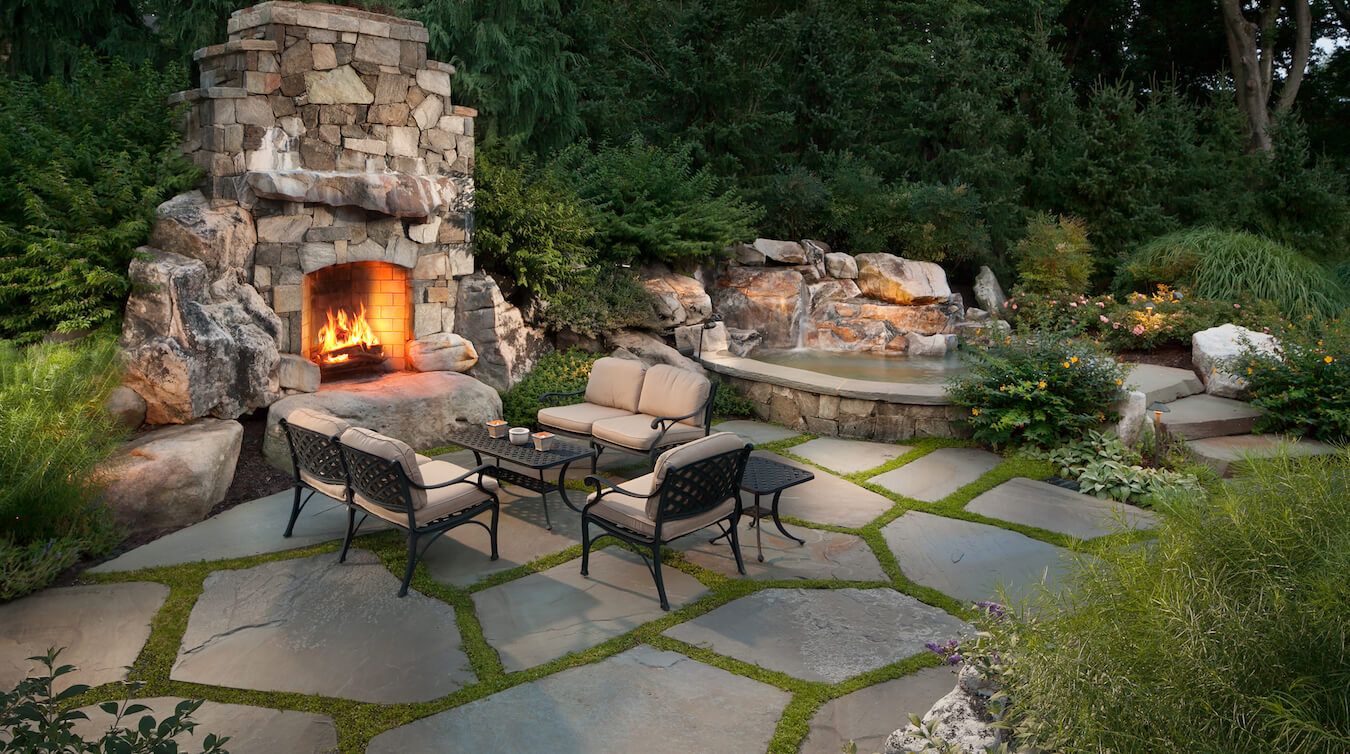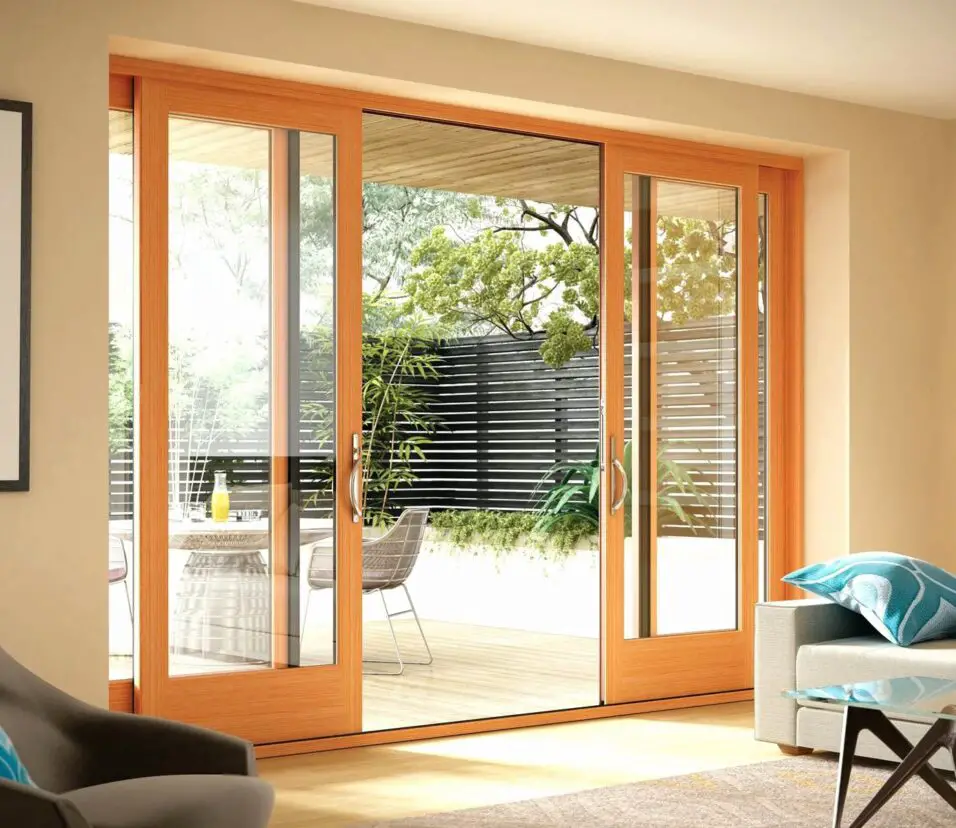How Much Does A Stone Patio Cost
Introduction
How Much Does A Stone Patio Cost: The cost of installing a stone patio can vary significantly based on several factors, such as the size of the area, the type of stone you choose, labor expenses, and any additional features you might want to incorporate, like seating walls, fire pits, or intricate patterns. Whether you’re on a budget or looking to create an extravagant outdoor retreat, understanding the factors influencing the overall cost will help you make informed decisions and achieve the patio of your dreams.
The overall size of your patio will be a major determinant of the cost. Larger patios require more materials and labor, making them pricier compared to smaller, more compact designs. There is a wide range of stone options available for patios, each with its own patio cushions price point. Common choices include flagstone, slate, limestone, granite, and travertine. Rarer or premium stones may cost more than standard ones.
The quality of the stone can also affect the cost. Higher-grade stones that are more uniform in thickness and color tend to be more expensive, but they offer a more polished and refined appearance. Elaborate designs with intricate patterns or custom features like curves and inlays will require skilled labor and potentially more time, driving up the overall cost. The condition of the ground where the patio will be installed plays a role in the cost. If the site requires extensive grading, leveling, or excavation, it will add to the expenses.
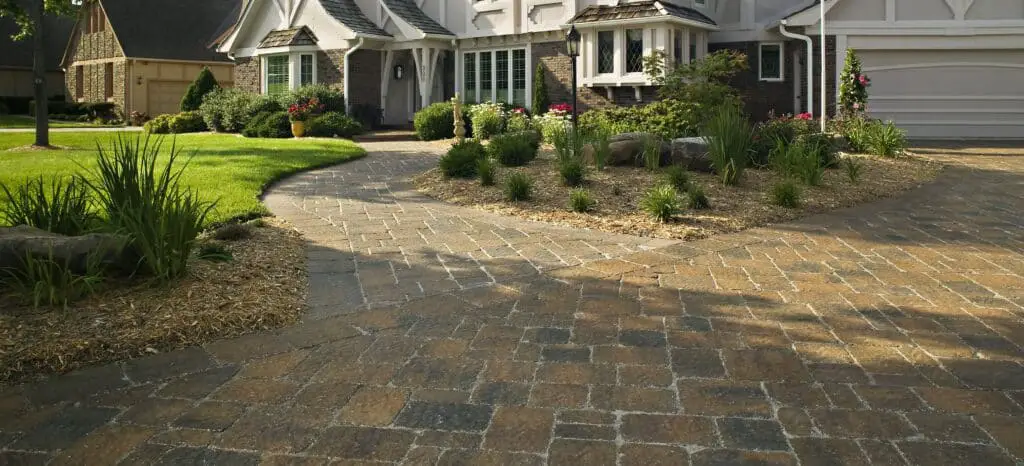
What is the cheapest stone patio?
At $6–$10 per square foot, pea gravel is a low-cost option. Since the stones remain loose and do not have to be hardened or set, this gravel can be used to create a patio in any shape. It’s also easy to install, so it’s a relatively simple DIY project, even for a new hardscaper.
rushed stone is one of the most budget-friendly options for creating a patio. It consists of small, rough stones that are compacted together to form a stable surface. While it may not have the elegance of high-end stones, crushed stone patios have a rustic appeal that can complement various outdoor designs.
Pea gravel is another affordable patio option that consists of small, rounded stones. When compacted, it creates a stable surface suitable for foot traffic and outdoor furniture. Pea gravel patios have a charming, relaxed look that works well in informal or cottage-style outdoor spaces.
While some pavers can be expensive, there are budget-friendly options available. Concrete pavers, for example, are a cost-effective alternative to natural stone pavers. They come in various shapes, sizes, and colors, allowing you to create a customized patio at a fraction of the cost.
Concrete slabs are a simple and economical choice for a stone patio. While not natural stone, concrete can be stamped or stained to resemble higher-end materials like flagstone or slate, offering a cost-effective alternative.
How do I calculate stone for a patio?
Multiply the length (L), in feet, by the width (W), in feet, by the height (H), in feet, and divide by 27. This number is how many cubic yards of crushed stone you need. When using this equation, make sure all your measurements are in feet.
Decide on the type of stone you want for your patio and determine the desired thickness. Different stones come in various thicknesses, so this will impact the amount of stone needed. Common patio stone thicknesses are usually 1 inch or 2 inches.
It’s wise to account for some extra stone to cover any waste due to cutting and fitting irregular shapes. Additionally, if you plan to use grout or sand between the stones, you’ll need to factor that into your calculations. A good rule of thumb is to add 5-10% to the total stone volume to account for these considerations.
If your patio design includes specific patterns or requires intricate cuts, it may be prudent to purchase slightly more stone to accommodate these features. Planning for these details in advance will ensure a smoother installation process.
Buying stone in bulk can often be more cost-effective than purchasing individual pieces. Check with local stone suppliers or home improvement stores for bulk pricing options. The accuracy of your stone calculation is essential to the success of your patio project.
If you’re unsure about the calculations or measurements, it’s always a good idea to consult with a professional landscaper or stone supplier. With proper planning and accurate calculations, you can confidently proceed with your stone patio project, knowing you have the right amount of materials to create a beautiful and functional outdoor space.
Is a paver patio cheaper than concrete?
However, even though the upfront cost of pavers is higher, concrete pavers offer greater value and durability than poured concrete and stamped concrete. This ultimately means that concrete pavers are the most cost-effective option overall.
Material Choice: The type of pavers you choose will impact the overall cost. Concrete pavers are generally more affordable, while natural stone or premium brick pavers can be more expensive.
Paver Design and Pattern: Elaborate designs and intricate patterns may require more time and expertise, which can increase the labor cost.
Site Preparation: The condition of the ground where the pavers will be installed can affect the cost. Extensive grading or excavation may be necessary, adding to the expenses.
Labor Costs: Hiring professionals to install the paver patio will incur labor costs. Rates can vary depending on the region and complexity of the project.
Maintenance: Paver patios usually require less maintenance, reducing long-term costs.
Concrete Grade: The quality of the concrete used can affect the cost. Higher-grade concrete with added reinforcements tends to be more expensive but offers increased durability.
Patio Design: Concrete patios can be customized with various finishes, stamps, or stains, which may affect the overall cost.
Site Preparation: Similar to paver patios, concrete patios may require site preparation, which can add to the expenses.
Which patio stone is best?
To summarise, sandstone paving is the best value due to its wide variety of colour choices and size options. It is long-lasting, easy to maintain, and suitable for a wide range of styles. Consider mixing various sizes for traditional styles and using single individual size pavers for more contemporary styles.
Flagstone is a popular choice for patios due to its natural beauty and versatility. It is available in various colors, shapes, and sizes, offering a range of design possibilities. Flagstone provides a flat and smooth surface, making it comfortable to walk on and ideal for outdoor seating areas. Its earthy and rustic appearance can complement both traditional and contemporary outdoor designs.
Travertine is heat-resistant, making it comfortable to walk on in summer.
Fine-grained metamorphic slate has unusual textures and deep colors. Its natural and sophisticated design suits modern outdoor areas. Slate patio stones are weatherproof and suited for many climes.
Concrete pavers are prefabricated stones in many shapes, sizes, and colors. They create a clean, homogeneous patio at a low cost and with customization. Concrete pavers can be patterned to suit your design.
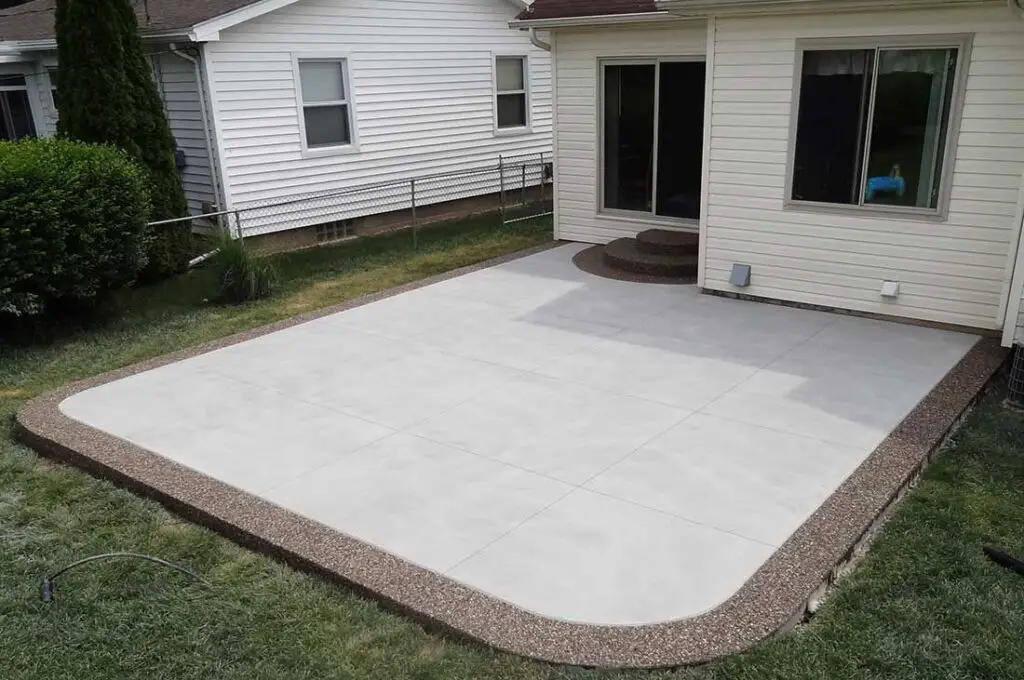
How thick is patio stone?
2 3/8″ pavers are substantial enough for residential driveways.
They are usually used to overlay concrete or decks or for restricted load-bearing applications.
They are stronger and more durable than 1-inch stones but best for decorative or light-to-moderate foot use.
Flexible 2-inch patio stones are versatile.
For strength or firmness.
Patio stones beyond 3 inches are utilized for heavy-duty applications.
How thick should a stone patio be?
Pavers should be at least 2 inches thick to disperse weight and minimize damage, especially if multiple people cross them.
Two inches (50mm) is the typical thickness for residential stone patios. This thickness is strong enough for patio furniture, foot traffic, and other features. A 2-inch stone patio can be used for many outdoor living spaces.
Thinner stones are suitable for patios with little foot traffic or ornamental purposes. Garden walkways, accent borders, and light-traffic areas benefit with 1–1.5-inch (25–38mm) stones.
If your patio will be used frequently or carry heavy weights, consider stronger stone.
For heavy-duty installations, patio stones are usually 3 inches (75mm) thick.
Thicker stones are needed in commercial and industrial patios with heavier loads. These uses involve stones thicker than 3 inches (75mm).
How deep should a stone patio be?
Stone type and sand or gravel underlayment dictate paver foundation depth. Pavers are usually 3–3 1/2 inches thick. To accommodate any paver, dig a 9-inch (22.86 cm) paver patio base.
A base depth of 4–6 inches (100–150mm) is suggested for most residential stone patios.
Stone Type: Different types of stones have varying weight-bearing capacities. The type of stone used will impact the required base depth.
Climate and Drainage: In areas with heavy rainfall or freezing temperatures, a deeper base is necessary to allow for proper water drainage and prevent damage from frost heave.
Soil Conditions: The stability of the patio relies on the soil beneath the base. In areas with poor or unstable soil, a deeper base may be necessary to provide adequate support.
Intended Use: Consider how the patio will be used and what types of loads it will need to bear. Heavier use requires a deeper and more stable base.
Determining the appropriate base depth for your stone patio is crucial for its long-term durability and performance. It’s recommended to consult with a professional landscaper or patio contractor to assess your specific needs and provide expert recommendations.
A professional can conduct a site evaluation, consider local soil and weather conditions, and help you determine the optimal base depth for your patio.
Can you lay patio stones on top of concrete?
Often, homeowners want to put pavers over top of existing concrete because it’s much better than the alternative: tearing up the underlying concrete first, which is a messy and potentially expensive job. Fortunately, you can put pavers directly over existing concrete.
Before laying patio stones on top of concrete, it’s crucial to ensure that the existing concrete surface is clean, free from cracks, and level. Remove any debris, dirt, or loose materials from the concrete to create a smooth and stable base for the patio stones.
Inspect the concrete for any significant cracks, heaving, or damage. Minor cracks can often be filled, but extensive damage may require repairs before overlaying with patio stones.
If the concrete surface has uneven areas or slopes, you may need to level it before proceeding. Use leveling compounds or concrete patches to even out any irregularities.
Select the type, size, and thickness of the patio stones you want to overlay on the concrete. Ensure that the chosen stones are suitable for overlaying and won’t add excessive weight to the existing concrete.
A bedding layer is needed between the concrete and the patio stones. Typically, a layer of sand is used as the base to help level the stones and provide some flexibility for adjustments.
Place the patio stones on the prepared concrete surface, starting from one corner and working your way out. Ensure that the stones are evenly spaced and level with each other. If you’re using interlocking pavers, follow the manufacturer’s recommendations for the specific laying pattern.
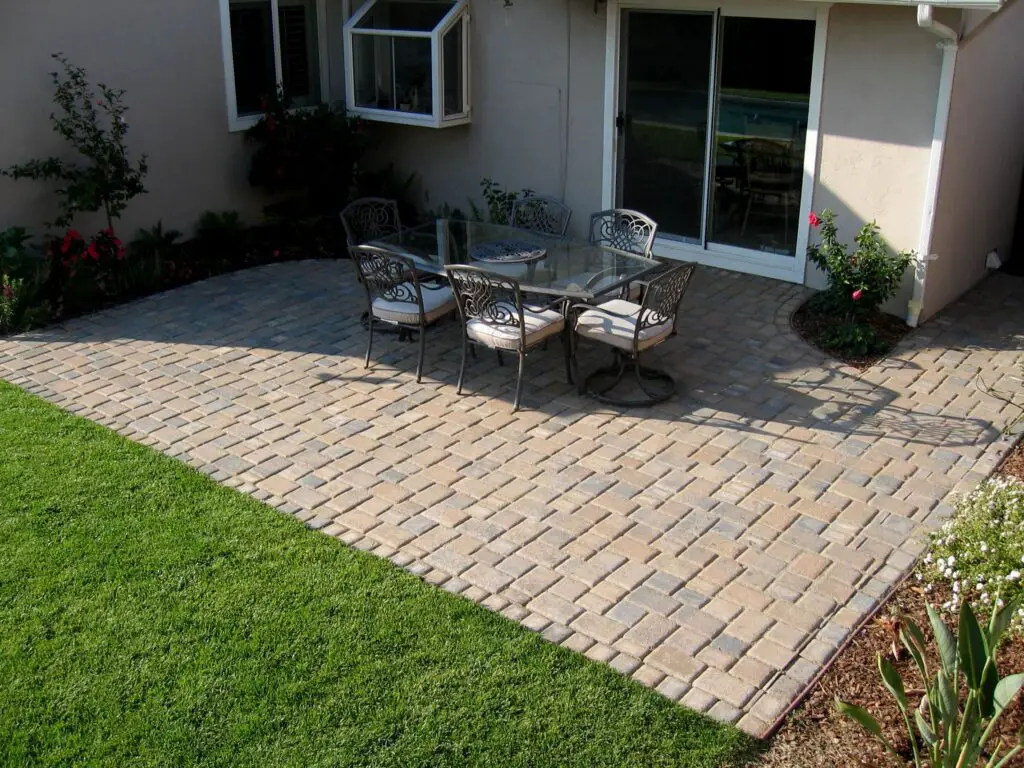
Conclusion
While stone patios can represent a significant investment, they offer a multitude of benefits that make them well worth the expense. Their timeless elegance, durability, and ability to withstand the elements make them a long-term investment that can enhance the beauty and functionality of your outdoor space for years to come. Offering a perfect setting for relaxation, entertainment, and making lasting memories with loved ones.
Before embarking on your stone patio price journey, it’s crucial to carefully plan and set a realistic budget based on your preferences and needs. Consulting with experienced professionals can provide valuable insights and help you make informed decisions about the best stone type, design, and features for your specific requirements. Remember that a well-maintained stone patio can become the heart of your outdoor living space.
If the location of your property is challenging to access, it may require additional effort and cost to transport materials and equipment to the site. Depending on your area, there might be permits or zoning regulations to consider, which can impact the overall cost. While not a direct upfront cost, it’s essential to factor in the long-term maintenance expenses of your stone patio to keep it looking pristine and prolong its lifespan.



